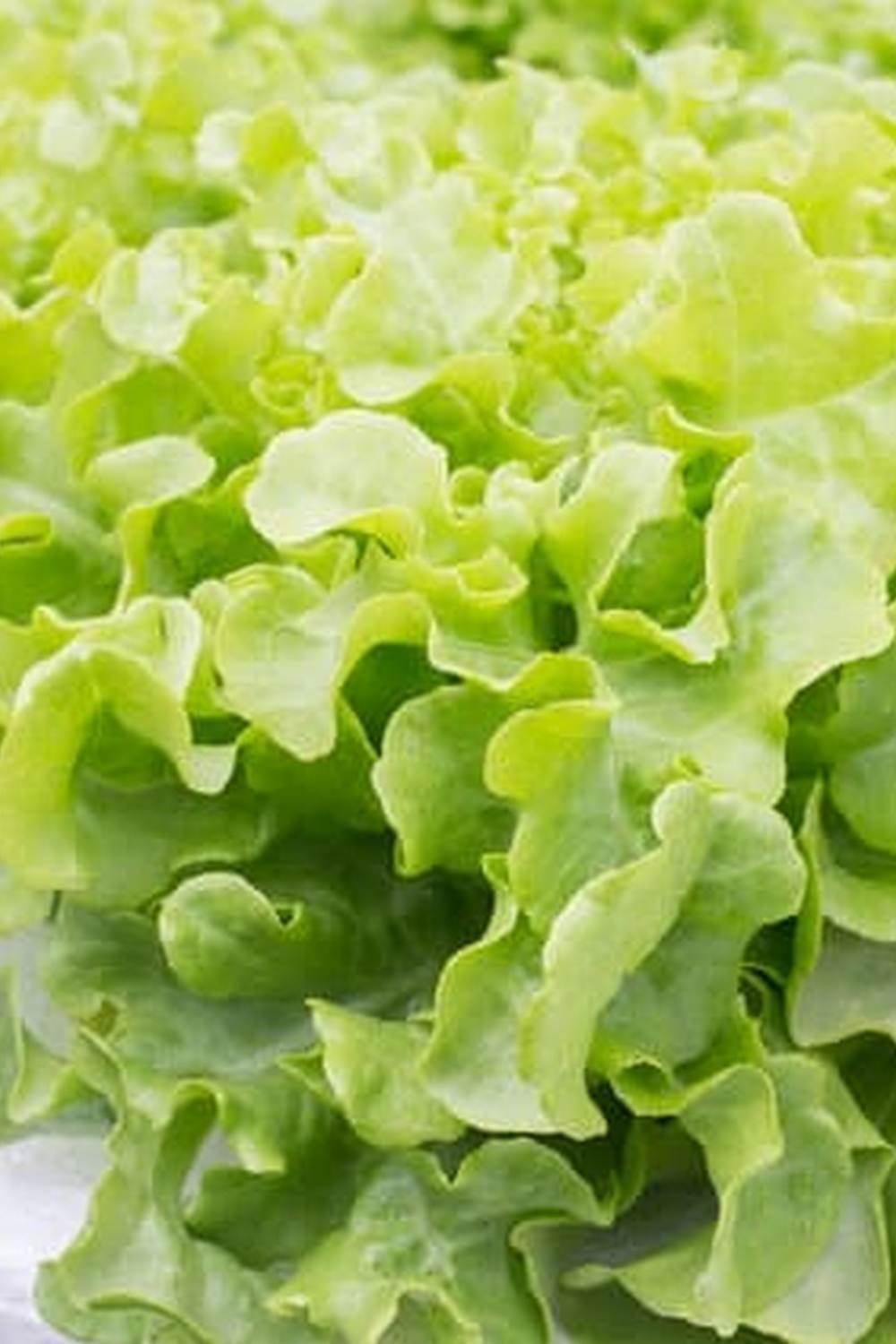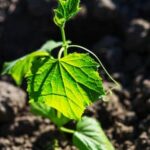Introduction
Colorado is known for its natural beauty and wide range of climates. Vegetable gardens are popular in the state due to the high elevation, temperate climate, and abundance of sunlight. Growing vegetables in Colorado can be quite rewarding and yield a large amount of produce. The following are some helpful tips for those looking to plant their own vegetable garden in the beautiful Centennial State.
1. Choose the Right Plant Varieties: Select varieties that have been specifically bred to withstand colder temperatures, as well as shorter growing seasons. Fortunately, Colorado offers ample opportunities to experiment with different types of vegetables, including heirloom varieties as well as hybrids that have been developed to thrive in different climates.
2. Pick the Right Location: Because Colorado has a wide range of climate zones and topography, it’s important to pick a spot that offers plenty of sunlight and access to water sources throughout the growing season. Avoid places near trees or other areas where shade can interfere with your plants’ ability to get enough sun exposure. Also consider incorporating raised beds into your garden layout if you plan on having long-term success with your vegetable garden in Colorado. Raised beds are ideal for areas with less than ideal soil conditions or rocky ground because they provide good drainage while retaining moisture so your plants can easily take root and flourish in challenging locations.
3. Consider Frost Times: While the growing season in Colorado generally begins around April or May, nighttime temperatures can still dip low enough to cause frost damage during certain parts of year. Take extra precaution around springtime by keeping track of frost dates and protecting sensitive vegetables such as tomatoes before they set fruit by using strategies like cold frames or cloth covers over your crops at night when there’s an increased chance for frost damage.
4 . Protect from Pests: Although Colorado doesn’t usually experience too much pest pressure compared to other parts of the country, it’s still important to take steps to protect against potential insect infestations or disease outbreaks by maintaining healthy soil conditions, rotating crops from year-to-year, and utilizing protective barriers such as lightweight row covers that create a physical barrier between your plants and common pests like birds or deer.
By following these simple tips for creating a vegetable garden in Colorado, you’ll be able to enjoy homegrown vegetables year round! Additionally, making sure your planting calendar is strategically planned out with proper safeguards like organic pest control measures will help ensure you have a successful harvest each time you step into the garden!
Choosing the Best Vegetable Varieties for the Colorado Climate
When planting a vegetable garden in Colorado, it is important to select varieties that are well-suited for the climate. While some vegetables can be grown from seeds, many benefit from buying transplants already started. Depending on the time of year and your local growing conditions, you may need to look for specific varieties of vegetables to ensure that they thrive. When selecting vegetables, consider their hardiness zones, temperature needs (cool or warm season), and length of growing season.
Vegetables such as broccoli and peas require cool temperatures and short growing seasons in order to produce high yields so planting them in early spring is important. For longer lasting crops such as tomatoes, peppers and beans that prefer warmer weather they should be planted in late spring or summer when temperatures are higher. If you wait until the soil has warmed up appropriately then these plants will yield more fruits. If needed, you can use row covers over your veggie beds during times of chilly weather since these serve as mini greenhouses providing extra warmth and protecting young seedlings delicate leaves.
Certain vegetables such as squash, cucumbers and melons are best suited for the dry climate but require plenty of water nevertheless. Drought tolerant varieties are highly recommended for areas with less rainfall so look for versions with reduced water requirements if possible – There are many great heirloom varieties available which offer robust flavor in addition to drought tolerance! Additionally keep an eye out for problems caused by Colorado’s altitude when selecting seed directly from seed catalogs; certain variety’s performance may suffer at elevation due to slower growth rates than normal so pay attention to any special ratings/special instructions local garden centers provide. With a little patience and knowledge, you can create a thriving vegetable garden despite any challenging aspects of the Colorado climate!
Steps for Planning and Creating the Perfect Soil for Planting
1. Test the soil to determine its pH levels and nutrient content. Having a better understanding of your soil can help you tailor your garden specifically for what will thrive in your environment. You can make use of kits from your local home and garden store or a professional soil analysis may be necessary if you want a more thorough assessment of the quality and makeup of the soil.
2. Amend the soil with compost or other organic material. Once an idea of what is needed is established, it’s then time to get your hands dirty (literally)! Composting not only adds nutrients to the soil, but also helps aerate it as well, which is important for preventing compaction and allowing more efficient drainage. Adding other materials such as sand, peat moss, and/or mulch can also help improve fertility.
3. Install proper drainage systems as needed; these may include raised beds or feeder pipes that divert any excess water away from gardens after heavy rains or snow melt periods. Quality drainage is key to keeping vegetables healthy since soggy or flooded soils can cause root components to decay. Additionally, well draining soil makes it much easier for roots to take up essential nutrients and moisture without having too much waterlogged on them during their growth cycles.
4. Irrigate on a regular basis in order to keep the plants growing healthy during dry spells; it’s important to ascertain how much water each particular vegetable variety needs based off its size and species type then applying accordingly using drip irrigation methods or manual watering cans/hoses when necessary. Properly timed and managed irrigation routines are important for controlling weeds too since dampening the area reduces germination rates – ultimately making weed management easier!
Water Management Strategies for a Productive Colorado Vegetable Garden
For a productive vegetable garden in Colorado, it is important to implement proper water management strategies. The type of irrigation and soil moisture conservation techniques used will depend on the location and climate. In dryer climates, drip irrigation, or irrigation that slowly delivers water to the root zone of the plants, can greatly improve water efficiency. Watering during cooler parts of the day and avoiding watering foliage helps minimize water loss from evaporation. Planting a cover crop such as clover between growing seasons is another efficient way to provide soil moisture while suppressing weed growth. The use of mulches designed specifically for vegetable gardens helps retain available soil moisture and limit weeds. In addition, keeping an eye on rainfall amounts provides insight into when supplemental watering may be necessary for optimal plant growth and productivity. With proper planning and implementation of water management strategies for vegetated gardens in Colorado, a productive bounty can be achieved.
Planting and Harvesting Vegetables at the Right Time of Year
When planting vegetables in your Colorado garden, it’s important to remember the best times of year for both planting and harvesting. In spring, start by planting cool season crops such as lettuce, spinach, peas and cabbage when soil temperatures reach at least 40 degrees F. However, more hardy cold crops like parsnips can be planted earlier when soil temperatures reach 35-40 degrees F. During this time of year you also can start to direct sow some summer crops like squash and corn.
After the average last frost date in spring, you can begin to plant warm season crops like tomatoes and peppers. Native root vegetables should be planted during late winter or early spring and are often harvested just before or just after the first frost. This will ensure fresh produce throughout the fall months as too much heat during summer can cause these plants to bolt or go to seed prematurely.
In addition to maintaining regular harvesting cycles throughout the growing season with vegetables such as kale and broccoli, it is important not to wait too long when harvesting vegetables as fruit vegetables tend to lose their flavor over time once they have been picked from the vine or bush. Lastly remember that with proper planning, succession planting (planting a new set of seeds every 7–14 days), and crop rotation your Colorado vegetable garden will be a success!
Natural Ways to Control Pest and Disease in the Garden
One of the best ways to reduce pests and disease in the garden is to practice crop rotation. This means not planting the same type of vegetable in the same spot each year – instead, planting different types of vegetables and herbs in a particular area over successive years. For example, if you planted lettuce in an area this year, try planting broccoli, tomatoes or beans next year. This will help reduce pest and disease buildup, as well as provide plants with varying levels of nutrients from the soil.
Another natural way to control pests and diseases is companion planting. This refers to choosing certain plants that repel insects and others that attract beneficial ones like ladybugs which feed on aphids or other pests feeds on larvae of harmful insects. For example, many finds that marigolds planted around their vegetable plot repel harmful nematodes while borage attracts moths who produce pollinating caterpillars that feed on some brassicas’ leaves – such as cabbages and kale. There are specific combinations like these that have proven successful for various crops, so research what works best for your garden! Finally, it’s important to keep your garden well weeded; weeds compete with vegetables for water, sunlight and nutrients so should be removed regularly.
Mitigating Damage from Colorado’s Wild Animals
Wild animals can be a major nuisance in Colorado vegetable gardens, as they are always looking for an easy meal. Such animals can range from small critters like deer mice and rabbits, to larger predators such as coyotes and bears. In order to protect your garden from being damaged by these animals, there are several measures you can take.
Firstly, consider erecting fences around the perimeter of your garden to create a barrier that wild animals cannot breach. Make sure to use materials that will sufficiently deter them from access and periodic checking of the fence will ensure its structural integrity has been maintained over time.
For more peace of mind, consider installing motion-sensor lights and/or camera systems to alert you if any wild visitors enter your garden space. Additionally, hanging empty plastic bottles filled with water at different points along the fence can startle off potential intruders upon their arrival and scare them away without causing any physical damage.
Planting certain plants such as peppercorns, lavender and garlic near or in-between your crops can also act as natural repellents while still providing a pleasant scent around the garden area. Furthermore, using organic pesticides made of clove oil or other all-natural ingredients have proven effective in keeping these pesky critters away without harming any beneficial insects that may help keep pests at bay too!
Adopting Sustainable Practices for Your Vegetable Garden in Colorado
When it comes to vegetable gardening in Colorado, the climate can be quite unforgiving. From cold and wet springs to summer droughts and heavy winds, extreme weather can make maintaining your garden difficult. But by following some sustainable practices, you can ensure that you have excellent yields season after season!
1. Watering: Watering your garden correctly is key to its success. The amount of water your vegetables need depends on soil type, as well as how much rainfall the area receives. Consider using water-saving irrigation methods such as drip or soaker hose systems which focus on delivering moisture directly to plant roots instead of spraying it across the entire garden bed. Track soil moisture levels with a hygrometer and be sure not to overwater or underwater your crops!
2. Mulching: If you’re looking for effective weed control for your vegetable garden in Colorado, consider adding a layer of mulch to the soil. This acts as a barrier against unwanted weeds, keeping them from sapping away precious moisture from your vegetables. Additionally, mulch retains heat when it’s nippy outside and cools things down during scorching days—talk about a win-win! Choose organic mulches like straw, grass clippings or bark chips for best results here.
3. Pest Control: Colorado has its fair share of harmful pests that can decimate vegetable plants if not managed correctly. Monitor regularly for signs of insects in the garden beds—look out for chewed leaves and branches or eggs on stems or undersides of plant leaves—to catch any possible invasions early on before they cause major damages to your crops. For pest control options, use natural remedies such as insecticidal soaps whenever possible as opposed to more toxic chemical treatments that may harm beneficial bugs within the system too.
Essential Gardening Care and Maintenance Tips for Colorado
Colorado boasts a diverse array of climates from high desert to alpine, meaning that gardening maintenance within the state requires a bit of finesse. For example, lowland areas are subject to a shorter growing season due to early-season frosts, while higher elevations are generally cooler and moister throughout the year. Here are some essential tips for gardening in Colorado:
1) Choose Stress-Resistant Varieties: Extreme temperatures can cause stress in vegetables, resulting in poor yields or stunted growth. Select varieties of vegetables that are known for their ability to withstand temperature variations and other adverse conditions such as drought or pests.
2) Build Healthy Soil: One of the most important components for any successful garden is healthy soil. Add organic material such as composted manure or leaf mold to improve drainage and aeration and help prevent certain diseases in your plants. Use organic fertilizers such as bone meal or cottonseed meal to provide additional nutrients throughout the year.
3) Make use of Cold Frames: Cold frames create ideal growing conditions during cooler seasons by providing insulation against extreme temperatures while still letting sunlight through. They can also be used as mini-greenhouses if outfitted with special plastic covers during periods when night temperatures drop very low.
4) Utilize Mulch: Mulching is a great way to protect crops against excessive heat during summer months and helps retain moisture in the soil throughout dry stretches. Organic mulches like straw, pine needles, leaves, or grass cuttings will also provide additional nutrients over time as they decompose in the garden bed.
5) Practice Companion Planting: By taking advantage of beneficial relationships between certain plants (e.g., squash paired with corn), you can maximize yields from your garden space and create a more balanced ecosystem that attracts beneficial bugs and repels pests.

If you’re looking to get into vegetable gardening, or are just looking for some tips on how to make your current garden better, then you’ve come to the right place! My name is Ethel and I have been gardening for years. In this blog, I’m going to share with you some of my best tips on how to create a successful vegetable garden.





